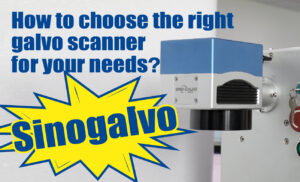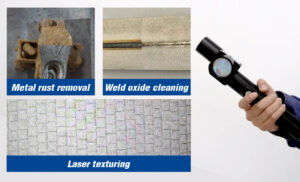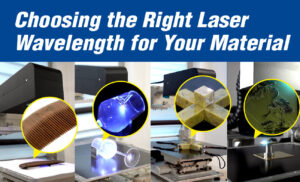
In eye OCT scan (Optical Coherence Tomography) industry, the choice of laser wavelength is crucial as it affects the resolution and depth of the imaging. The most commonly used wavelengths are in the near-infrared (NIR) range, typically between 800 nm and 1300 nm.
Here’s an overview of the application scenarios, advantages, and disadvantages of eye oct scan lasers in the 800nm, 1050nm, and 1300nm:
|
800nm |
1050nm |
1300nm |
|
|
Eye OCT Scan Application Scenarios |
Retinal Imaging: Primarily used for imaging the retina, which is a relatively shallow structure in the eye.(1) Anterior Segment Imaging: Can also be used for the anterior segment (e.g., cornea and lens), but less commonly than for the retina. |
Deeper Retinal and Choroidal Imaging: Better suited for imaging the deeper layers of the retina, including the choroid. Whole Eye Imaging: Can be used for imaging both the anterior and posterior segments of the eye. |
Anterior Segment Imaging: Primarily used for imaging the anterior segment, including the cornea, sclera, and angle structures. Deep Tissue Imaging: Suitable for imaging deeper ocular structures that are not easily accessible with shorter wavelengths. |
|
Eye OCT Scan Advantages |
High Resolution: Shorter wavelength provides better axial resolution, which is ideal for detailed imaging of thin structures like the retina. Commercial Availability: Many OCT systems operate in this band, with well-established technology and clinical applications. |
Better Depth Penetration: The 1050nm wavelength penetrates deeper into the tissue, allowing for better imaging of the choroid and sclera. Reduced Scattering: Longer wavelength reduces scattering, providing clearer images in deeper tissues. Improved Visualization of Choroid: Particularly useful in conditions where choroidal imaging is critical, such as age-related macular degeneration (AMD) and central serous chorioretinopathy (CSR). |
Excellent Depth Penetration: The 1300nm wavelength offers the deepest penetration, making it ideal for imaging thick tissues and the anterior segment. Low Scattering: Even lower scattering than 1050nm, resulting in clearer images of deeper structures. Imaging of Opaque Tissues: Effective in imaging through opaque or highly scattering tissues, such as in patients with cataracts or other opacities. |
|
Eye OCT Scan Disadvantages |
Limited Penetration Depth: The shorter wavelength does not penetrate as deeply into the eye tissues, making it less suitable for imaging deeper structures like the choroid or sclera. Higher Scattering: Higher scattering at this wavelength can lead to less clear images in denser or more opaque tissues. |
Lower Resolution than 800nm: Slightly lower axial resolution compared to the 800nm band due to the longer wavelength. Less Common: Not as widely available as 800nm systems, though it is gaining popularity. |
Lower Resolution: Further reduced axial resolution compared to 800nm and 1050nm wavelengths. Less Common for Retinal Imaging: Not ideal for high-resolution imaging of fine retinal details, making it less suitable for retinal diagnostics. Cost and Availability: Systems using 1300nm lasers are generally less common and more expensive. |
Eye OCT Scan Laser Wavelengths Option:
- 800nm: Best for high-resolution retinal imaging, but limited depth penetration.
- 1050nm: Balances depth and resolution, ideal for deeper retinal and choroidal imaging.
- 1300nm: Offers the best depth penetration, suited for anterior segment imaging, but with lower resolution.
The choice of wavelength depends on the specific clinical application and the structures of the eye that need to be imaged.
REFERENCES
(1) https://wasatchphotonics.com/applications/longrange-oct-imaging-800nm/





